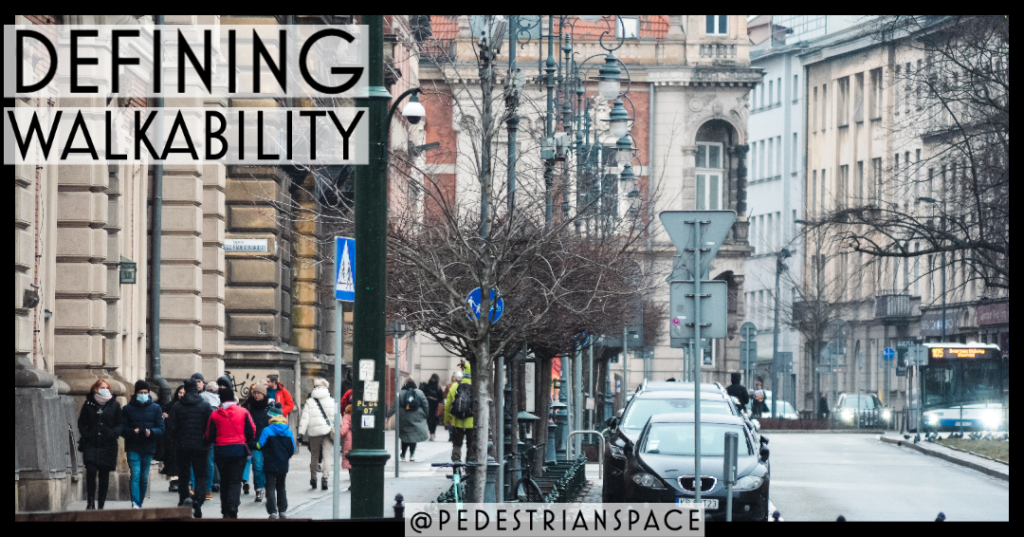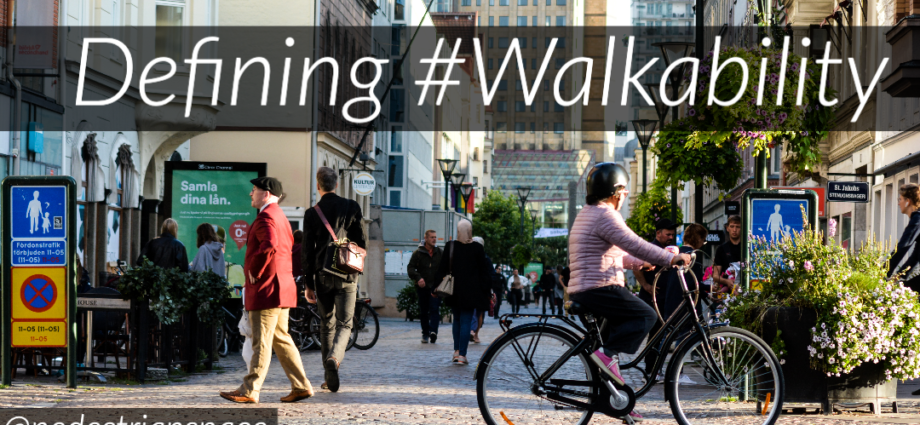Here at Pedestrian Space, we are always exploring the many dimensions of walkability and how people experience it differently. With that in mind, we began reaching out to hear people’s different perspectives and descriptions of walkability.
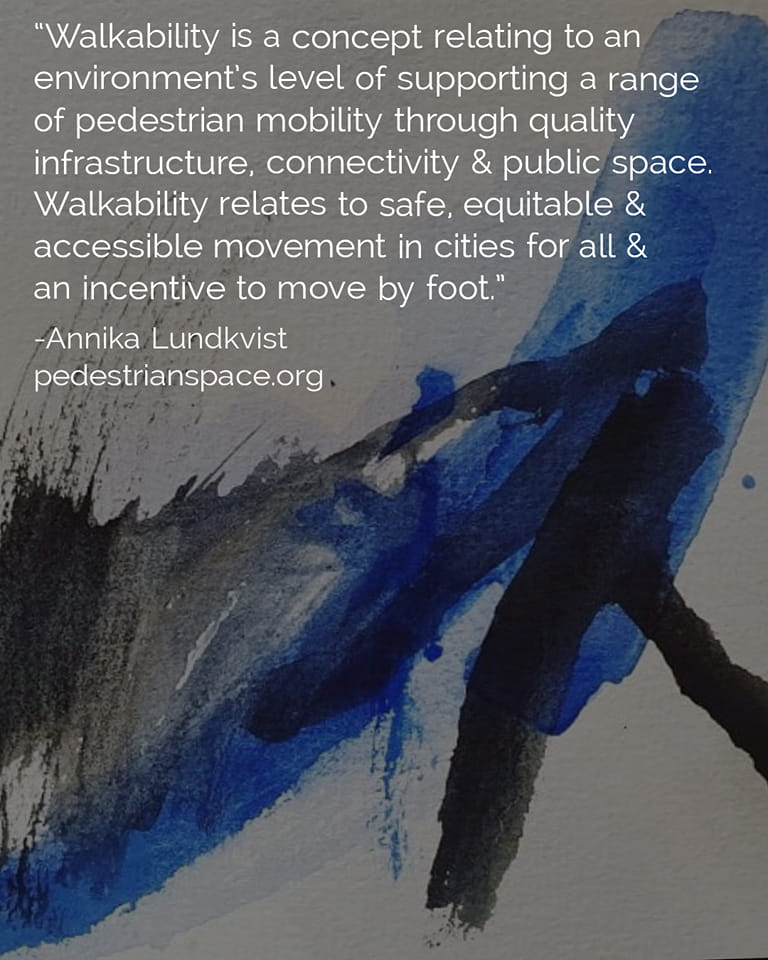
I begin with sharing one of my own definitions, above. Please note as well that when we discuss walkability, this of course includes people moving in diverse ways- including by wheelchair, young children being pushed in strollers, people using walkers and more.
Read on for many different ways of perceiving and describing walkability.
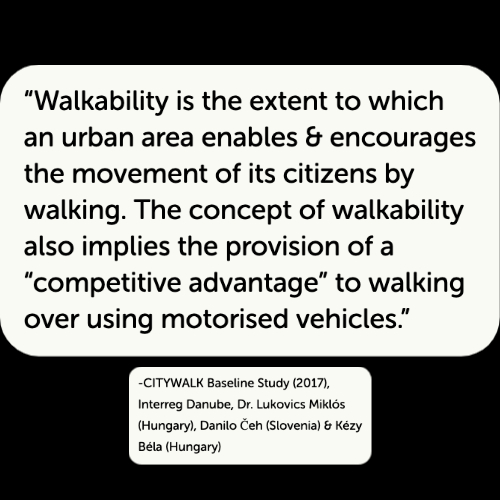
“Walkability is the extent to which an urban area enables and encourages the movement of its citizens by walking. The concept of walkability also implies the provision of a “competitive advantage” to walking over using motorized vehicles.” –CITYWALK Baseline Study (2017), Interreg Danube, Dr. Lukovics Miklós (Hungary), Danilo Čeh (Slovenia) and Kézy Béla (Hungary)
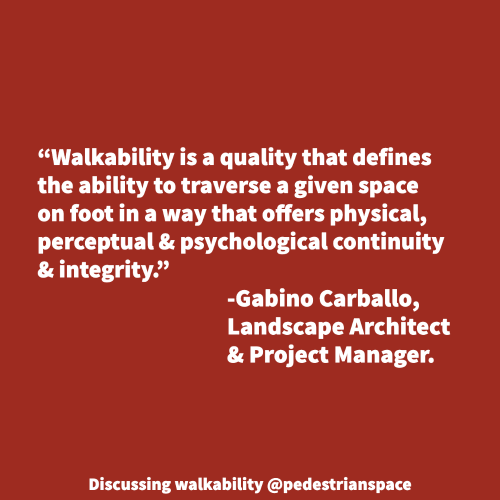
“Walkability is a quality that defines the ability to traverse a given space on foot in a way that offers physical, perceptual and psychological continuity and integrity.” –Gabino Carballo, Landscape Architect and Project Manager
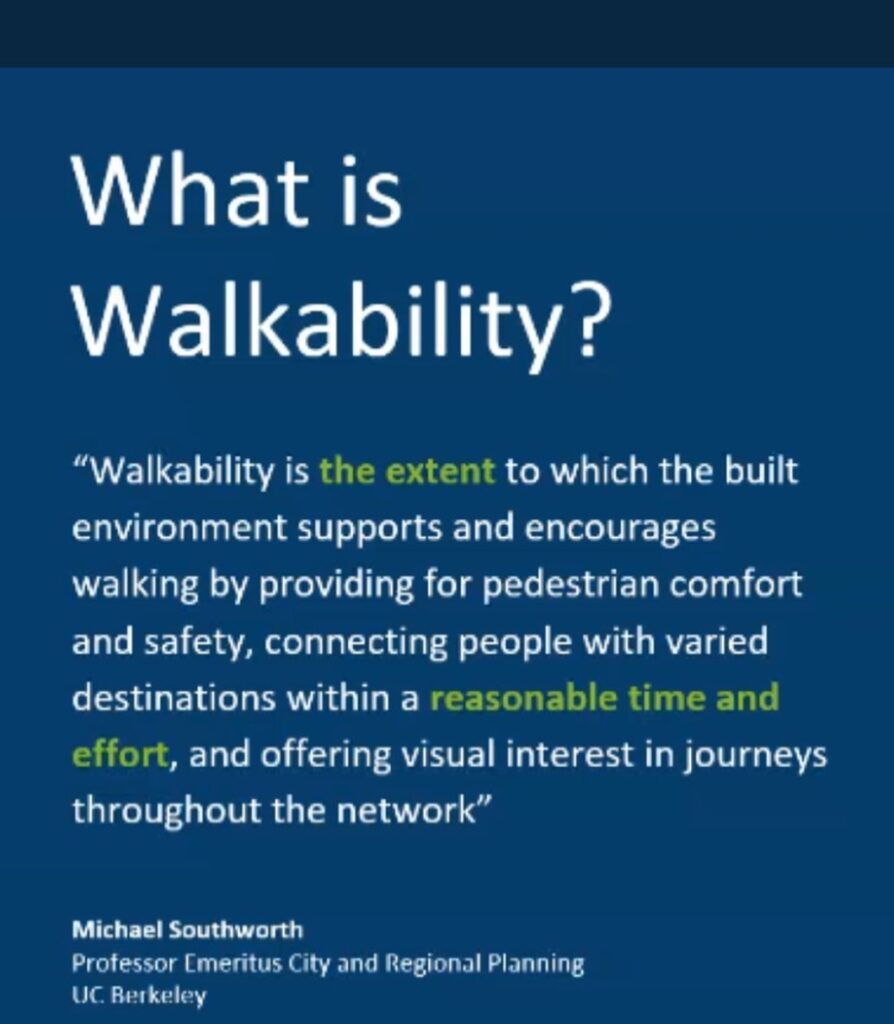
“Walkability is the extent to which the built environment supports and encourages walking by providing for pedestrian comfort and safety, connecting people with varied destinations within a reasonable time and effort, and offering visual interest in journeys throughout the network.” -Michael Southworth, Professor Emeritus City and Regional Planning, UC Berkely. (Source: Designing the Walkable City, Journal of Urban Planning and Development, Fall 2005).
“When you’re nine, walkability is a neighborhood where you can safely go to the store all by yourself on foot. Ditto when you’re 70.” – Mary Soderstrom, Author (Montreal, Quebec, Canada)
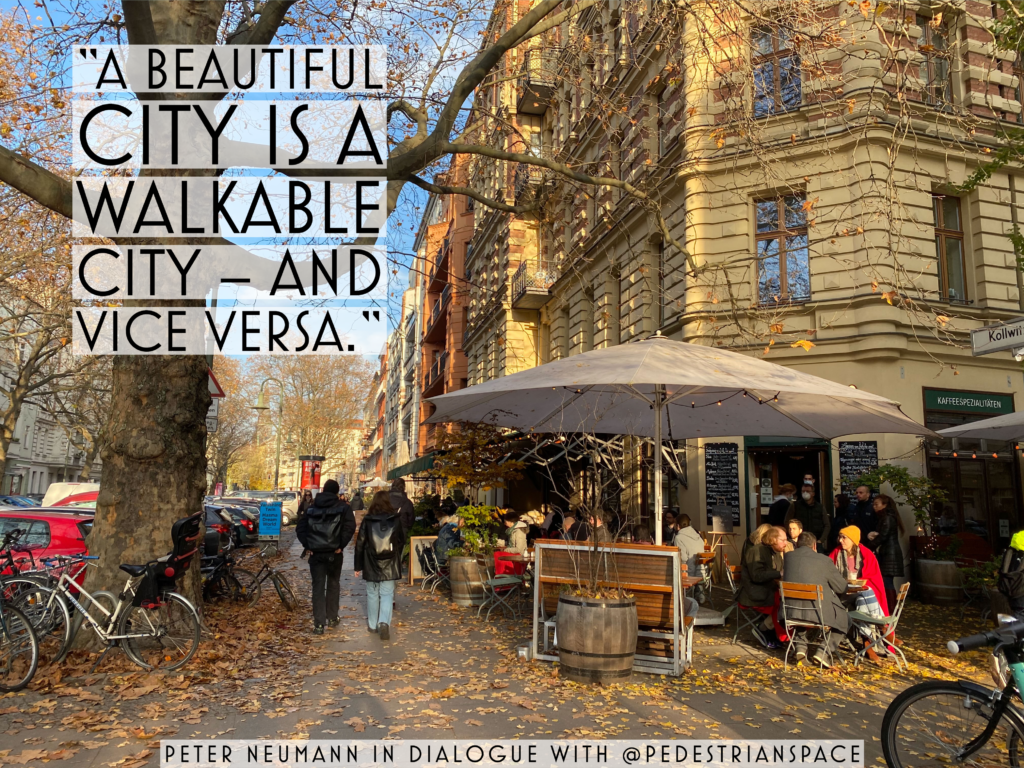
“A beautiful city is a walkable city- and vice versa.” –Peter Neumann, Berliner Zeitung Mobility Editor
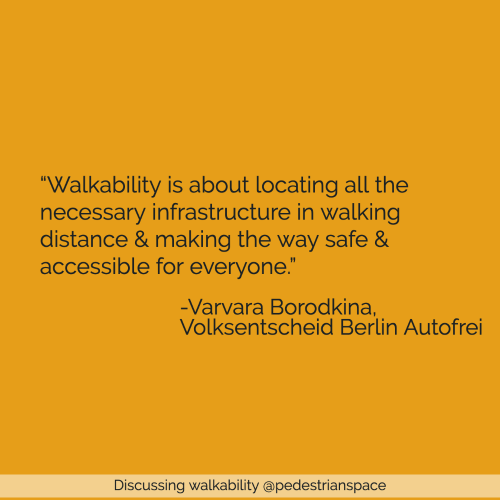
“Walkability is about locating all the necessary infrastructure in walking distance & making the way safe & accessible for everyone.” –Varvara Borodkina, Volksentscheid Berlin Autofrei
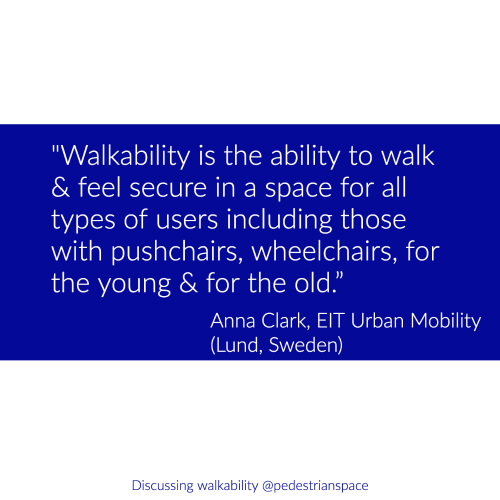
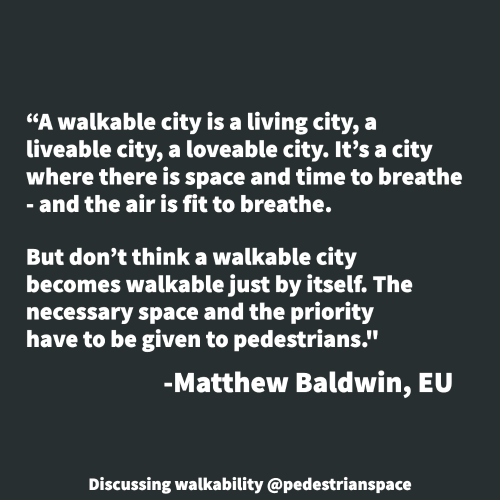
“A walkable city is a living city, a liveable city, a loveable city. It’s a city where there is space and time to breathe – and the air is fit to breathe. But don’t think a walkable city becomes walkable just by itself. The necessary space and the priority have to be given to pedestrians. “ -Matthew Baldwin, Deputy Director-General of the European Commission’s Directorate-General for Transport and Mobility (Brussels, Belgium)
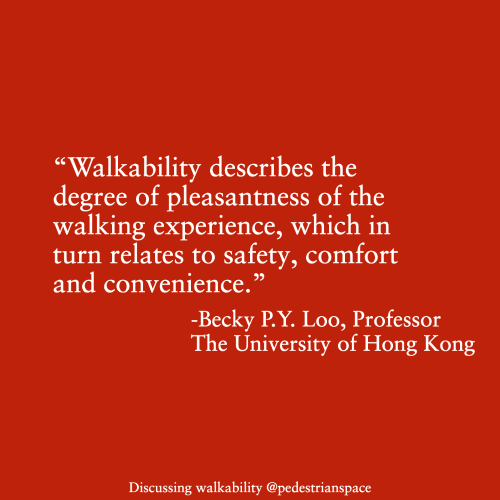
“Walkability describes the degree of pleasantness of the walking experience, which in turn relates to safety, comfort and convenience.” -Becky P.Y. Loo, Professor, The University of Hong Kong
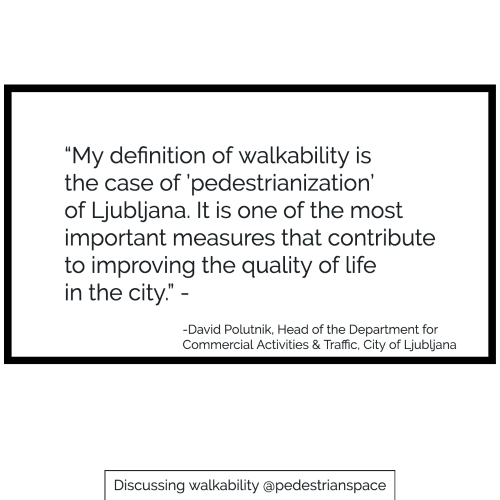
“My definition of walkability is the case of ’pedestrianization’ of Ljubljana. It is one of the most important measures that contribute to improving the quality of life in the city. Namely, since 2007, through several reconstructions and urban redevelopment projects the city center has gained many new public pedestrian areas, more green spaces, revitalized riverbanks, new bridges and refurbished squares, which are closed to motorized traffic. The central public space has been enriched by activities that encourage socialization and economy, and provide space for social interaction, cultural, sports and entertainment events. The pedestrian or ecological zone in the city centre has been gradually expanded, and now covers approximately 12 ha. This is a showcase of how theories about walkability become ‘alive’ in a form of a good practice example, which actually brings or improves walkability of a city.” -David Polutnik, Head of the Department for Commercial Activities and Traffic, City of Ljubljana
“Walkability doesn’t just mean short distances; it means shade and trees, curb ramps and safe intersections, and lighting and street furniture.” -Michael Schneider, Founder, Streets For All
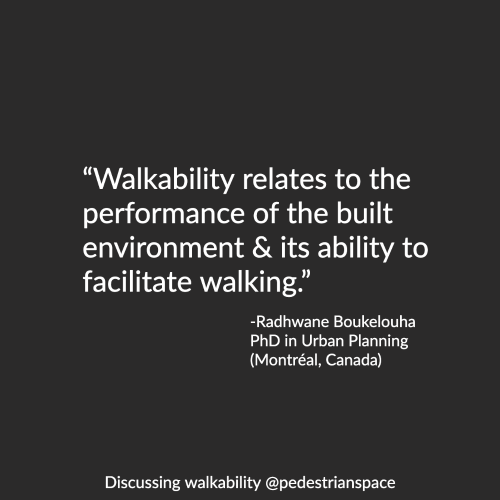
“From a morphological point of view, walkability refers to a set of morphological and non-morphological features which result from a spontaneous or conscious awareness and which aim to facilitate pedestrian movements by making them optimal and comfortable. Walkability relates to the performance of the built environment and its ability to facilitate walking.” -Radhwane Boukelouha PhD in urban planning, Montréal, Canada.
“Walkability is the extent to which the built environment supports and encourages walking by providing for pedestrian comfort and safety, connecting people with varied destination within a reasonable time and effort, and offering visual interest in journeys throughout the network.” -Michael Southworth, Professor Emeritus City And Regional Planning, UC Berkeley. Source: Designing the Walkable City, Journal of Urban Planning and Development, Fall 2005
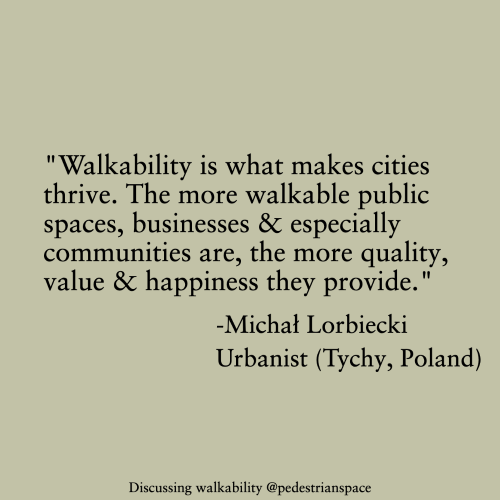
“Walkability determines the level of friendliness of spending time in the city on foot. It’s not only about being able to walk through the city. It’s about feeling safe and comfortable in public spaces as well as having possibilities to interact with people and various utilities of a city. Walkability is what makes cities thrive. The more walkable public spaces, businesses and especially communities are, the more quality, value and happiness they provide.” -Michał Lorbiecki, Urbanist (Tychy, Poland)

“Walkability is the ability to walk and feel secure in a space for all types of users including those with pushchairs, wheelchairs, for the young and for the old.” -Anna Clark, EIT Urban Mobility (Lund, Sweden)
“Walkability is the quality of urban design that provides a community’s residents the option to live fully productive and pleasurable lives without owning an automobile. The car is still welcome, but at slow speeds as an optional instrument of freedom rather than a prosthetic device that we depend on to live our lives.” -Jeff Speck, author of ‘Walkable City’ (Brookline, Massachusetts)
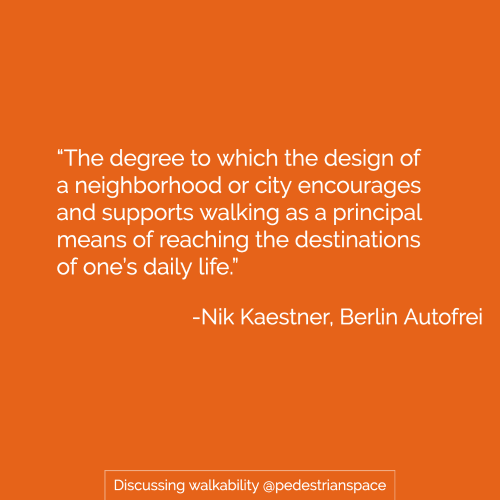
“The degree to which the design of a neighborhood or city encourages and supports walking as a principal means of reaching the destinations of one’s daily life.” -Nik Kaestner, Berlin Autofrei
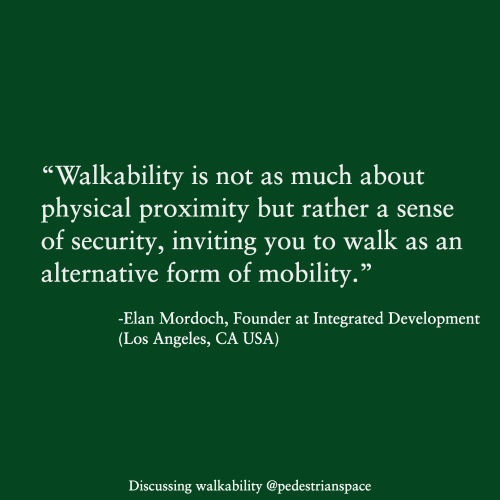
“Walkability is not as much about physical proximity but rather a sense of security, inviting you to walk as an alternative form of mobility. It’s the idea that people are more likely to walk greater distances when the environment is activated with other people and offers visual variation that relates to the human scale traveling between 3-4 mph. Long, desolate commercial corridors with undifferentiated glass storefronts feel treacherous and seemingly never-ending. It is those city environments that are the byproduct of auto-centric urban planning.” -Elan Mordoch, Founder at Integrated Development (Los Angeles, California, USA)
